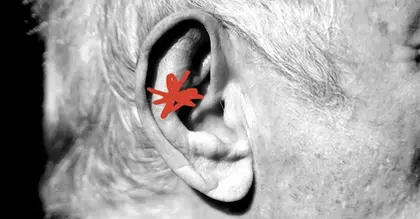
- Experts are interested in exploring the role of exercise in cancer management.
- One study found that physical activity before cancer diagnosis is associated with a decreased risk of cancer progression and death.
- The results highlight the potential benefits of exercise for decreasing cancer progression risk and encourage its regular incorporation into people’s lives.
Globally, cancer is the
A study recently published in the British Journal of Sports Medicine explored how physical activity levels before cancer diagnosis affected cancer progression and mortality among participants in South Africa.
Including data from over 28,000 participants with stage 1 cancers, the study found that physical activity before cancer diagnosis was associated with lower mortality and cancer progression.
Authors of the current study note that physical activity helps prevent cancer and decrease mortality, based on available evidence. They wanted to examine how physical activity influenced cancer progression in South Africa, as data in this area are lacking.
This research was a retrospective longitudinal observational study. It used anonymized data from people on the medical plan Discovery Health Medical Scheme in South Africa.
All participants were also part of a health promotion program called Vitality. This program is linked to the Discovery Health Medical Scheme and encourages behaviors like physical activity. It also allows physical activity to be recorded through wearable fitness devices and other actions like clocked gym attendance.
Researchers included participants in their analysis who had stage 1 cancer and had been in the Vitality program for at least 1 year before their diagnosis. They also conducted a subanalysis that excluded certain cancer types that were more likely to affect physical activity levels prior to diagnosis.
The average time participants were in the Vitality program was nine and a half years. Researchers divided participants into three groups based on physical activity levels:
- none: no recorded physical activity
- low: 1-59 minutes of recorded physical activity a week
- moderate to high: 1 hour or more of recorded physical activity a week.
For this study, physical activity meant at least moderate intensity, and researchers assigned participants into categories based on their physical activity in the 12 months before cancer diagnosis, although additional analysis considered earlier activity, too.
Researchers took into account age at diagnosis, sex, and socioeconomic status, which was based on factors like insurance type.
They also took into account the general impact of comorbidities prior to cancer diagnosis. When looking at specific types of cancer, researchers performed separate analyses on the effects of physical activity on prostate, breast, and skin cancer.
About 62% of participants had no recorded physical activity, but about 25% had moderate to high recorded physical activity. Prostate and breast cancer were the most common cancer types among participants.
Throughout the observed time frame, almost 19% of the participants died, but 65.5% of participants did not experience cancer progression.
Compared to those with no activity, people in the moderate to high physical activity group were 27% less likely to experience cancer progression and 47% less likely to experience death from any cause.
The low physical activity group was 16% less likely to experience cancer progression and 33% less likely to experience death from any cause compared to the group with no physical activity.
However, when looking at participants who had body mass index data, there wasn’t a significant difference in progression outcomes for the low physical activity group and the no physical activity group.
Analyses of specific cancer types revealed similar benefits. However, when it came to prostate cancer progression and skin cancer all-cause mortality, low physical activity levels had the most positive results. For skin cancer progression, the impact of low and moderate to high physical activity was the same.
When looking at the probability of progression and death, the data continued to highlight the benefits of physical activity. For example, 2 years after diagnosis, people who had moderate to high physical activity in the year before diagnosis had an 80% chance of not dying or cancer not advancing to higher levels.
By comparison, people with no physical activity had a 74% chance of these events not happening. When looking at all-cause death, people with no physical activity had a 91% chance of survival, while people with moderate to high physical activity had a 95% chance of survival.
The research cannot establish a causal relationship, even though it points to the benefits of exercise. When looking at the probabilities of cancer progression and death, researchers used an example male individual with certain characteristics. This could have affected the results.
The recorded physical activity of participants could also differ from actual levels of physical activity.
While researchers minimized the risk of reverse causality, it is still possible. There is also the possibility of bias because researchers did not adjust for factors like smoking. They also assumed participants who did not have recorded physical activity in the Vitality program were not doing recreational exercise.
Anne McTiernan, MD, PhD, professor in the Epidemiology Program at the Fred Hutchinson Cancer Center McTiernan, who was not involved in the study, told Medical News Today that:
“There were several drawbacks to the study: It only collected exercise data from before diagnosis. We have no idea what these patients did afterwards […] While the measured exercise was likely accurate, it didn’t capture all that people do. So, for example, patients who had physically active jobs but didn’t wear watches that capture movement would have been inaccurately classified as doing no physical activity. The data support this since 60% were classified as having no physical activity. Even walking to your fridge or car or job entails some activity, so this study would have vastly underestimated amounts of activity.”
Researchers also lacked some data. For example, they had limited data on body mass index (BMI), so they did not account for this information in the primary analysis. They only examined it in a secondary analysis. They also did not have racial or ethnicity data for participants. Some participants also left the scheme.
Furthermore, the findings cannot necessarily be generalized to all people in South Africa since this focused on people with access to private health insurance, which tends to be higher among white and Asian descent individuals in this area. Individuals were also part of an incentive program that encouraged physical activity.
Researchers only considered three specific types of cancer in additional analyses and otherwise looked at all cancers together.
“The population was from an insurance database […] The database was developed for insurance, not research. So other variables that could explain associations between exercise and prognosis (completion of cancer therapies, weight, smoking, etc) were largely not available,” McTiernan added.
Overall, the results highlight the positive impact of exercise compared to sedentary behavior when it comes to cancer progression and mortality. It suggests that even low levels of physical activity may be beneficial.
Study author Jon Patricios, MBBCh, MMedSci, a specialist sport and exercise medicine physician and visiting professor at Wits University in Johannesburg, South Africa, noted the following clinical implications of the data to MNT:
“With cancers being diagnosed earlier and an increasing incidence, accessible interventions that may positively influence prognosis are more relevant than ever. Knowing that as little as 60 minutes of regular weekly exercise may reduce the likelihood of cancer progression by 27% and death by 47%, should encourage all doctors to use exercise as medicine.”
“Regular physical activity is the most powerful and accessible prescription we can give our patients,” he added.
According to him, “this study confirms the benefits of even relatively small amounts of physical activity but we should encourage adherence to the WHO [World Health Organization] guidelines of 300 minutes per week of moderate intensity exercise for all of its well-described benefits.”





